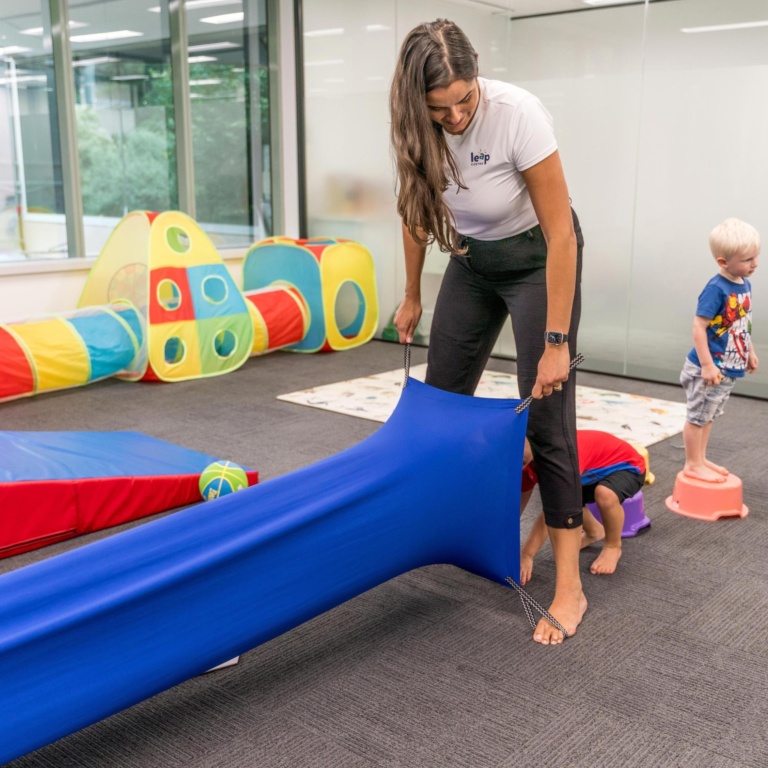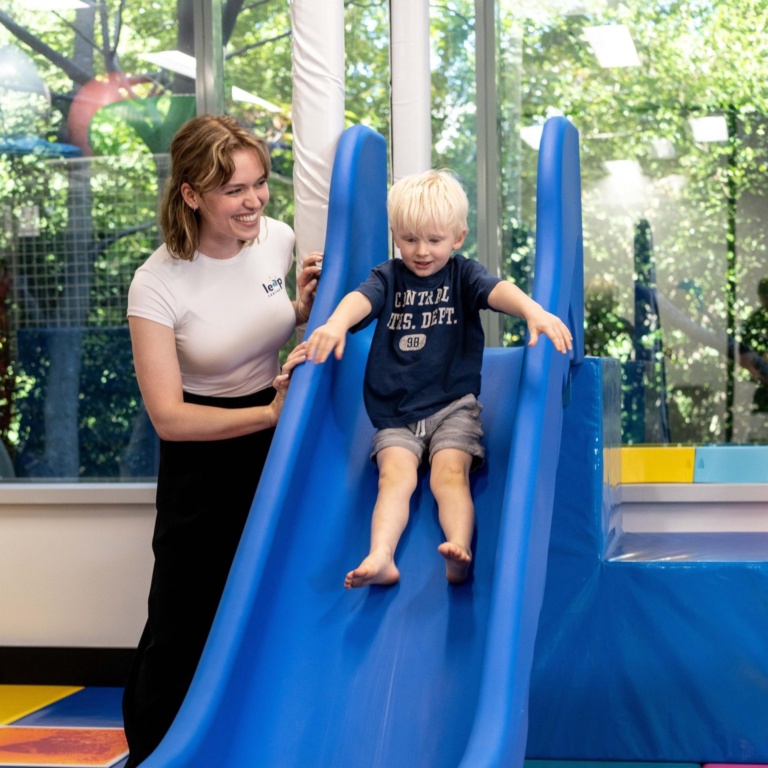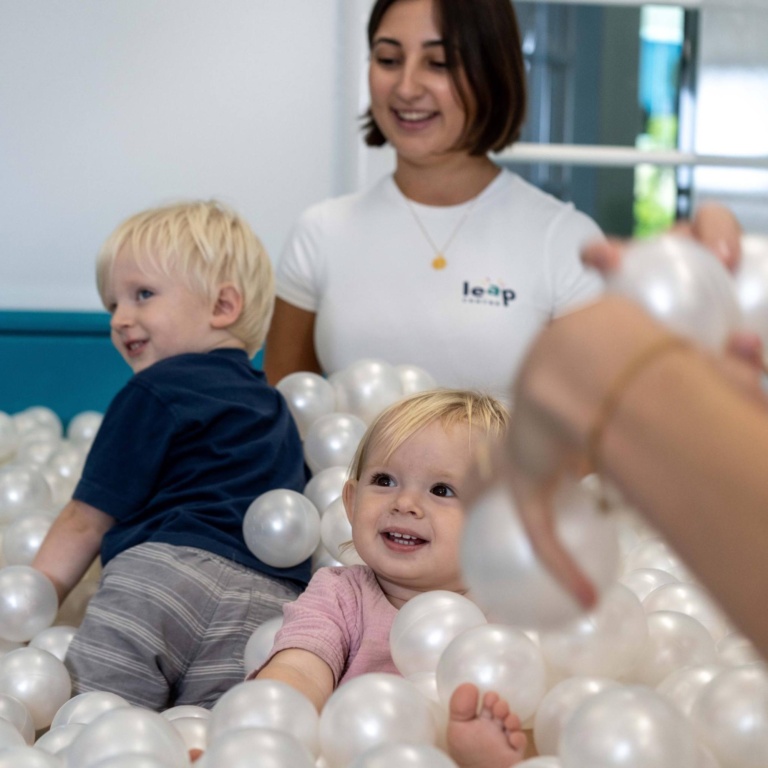
Home / Our Therapies / Physiotherapy / Paediatric Physiotherapy / Balance and Coordination




Do you notice your child appearing clumsier than their peers? Tripping or bumping into things frequently? Difficulty learning new motor skills? These could indicate an underlying issue with balance and coordination.
Proper balance and coordination are crucial for children’s physical development and play a significant role in their ability to perform everyday activities confidently.
Balance is the ability to maintain a controlled body position during activities, whether stationary or moving. It involves a complex interplay between the sensory systems, including the visual, vestibular (inner ear), and proprioceptive (sense of body position) systems. These systems send signals to the brain about the body’s position in space, allowing for necessary adjustments to maintain stability.
Coordination, on the other hand, refers to the smooth and efficient movement of different parts of the body together. It encompasses fine motor skills, such as writing or buttoning a shirt, and gross motor skills, such as running or jumping. Effective coordination requires the integration of sensory information and the execution of precise motor responses, which are controlled by the brain and nervous system.




So, what causes a lack of coordination and balance? Several factors can cause a lack of coordination and balance in children.
Disorders such as cerebral palsy, ataxia, and dyspraxia can affect the brain’s ability to process sensory information and execute motor functions accurately, leading to coordination and balance issues.
Children with developmental delays may struggle with motor skills, which can affect their ability to balance and coordinate movements effectively.
Physical injuries, especially those affecting the brain or the musculoskeletal system, can impair balance and coordination. For example, a concussion can disrupt the vestibular system, leading to balance problems.
Weakness in the core muscles, legs, or arms can make it challenging for children to maintain balance and perform coordinated movements.
Children who have difficulty processing sensory information may struggle with balance and coordination. This is often seen in conditions like autism spectrum disorder (ASD).
Disorders such as cerebral palsy, ataxia, and dyspraxia can affect the brain’s ability to process sensory information and execute motor functions accurately, leading to coordination and balance issues.
Children with developmental delays may struggle with motor skills, which can affect their ability to balance and coordinate movements effectively.
Physical injuries, especially those affecting the brain or the musculoskeletal system, can impair balance and coordination. For example, a concussion can disrupt the vestibular system, leading to balance problems.
Weakness in the core muscles, legs, or arms can make it challenging for children to maintain balance and perform coordinated movements.
Children who have difficulty processing sensory information may struggle with balance and coordination. This is often seen in conditions like autism spectrum disorder (ASD).
At the LEAP Centre, our physiotherapists use a variety of engaging activities to enhance balance and coordination in children. These activities are designed to be fun and challenging, helping children develop these essential skills in an enjoyable way. For example, obstacle courses, which require children to navigate various physical challenges, and balance beams, which help improve stability and concentration. Trampoline exercises are used to enhance dynamic balance and proprioception. Ball games are excellent for developing hand-eye coordination and timing. Additionally, yoga and stretching exercises promote flexibility, balance, and body awareness. By incorporating these activities into therapy sessions, we aim to create a supportive environment where children can improve their balance and coordination while having fun.
If you notice that your child is struggling with balance and coordination, contact LEAP Centre today. Our experienced paediatric physiotherapists can give you support for your child’s development.
Parents can measure their child’s balance and coordination with a few simple tests at home. Here are some practical activities to try.
Ask your child to stand on one leg for as long as possible. Note how long they can maintain their balance. Repeat with the other leg and compare the times.
Have your child walk in a straight line, placing the heel of one foot directly in front of the toes of the other foot with each step. Observe their ability to walk steadily without losing balance.
Have your child stand with their feet together and reach forward as far as they can without moving their feet. Measure the distance they can reach. This tests both balance and flexibility.
Play a game of catch with your child, using a ball of suitable size. Observe how well they coordinate their hand movements to catch and throw the ball.
Encourage your child to hop on one foot, then switch to the other foot. Additionally, ask them to jump forward with both feet together. These activities help assess dynamic balance and coordination.
By regularly engaging in these activities, you might notice that your child is struggling with balance and coordination. If you feel like you don’t know where to start, simply, contact LEAP Centre today. Our experienced physiotherapists can provide a thorough assessment and offer in-depth guidance to support your child’s development.
The cerebellum, located at the back of the brain, is primarily responsible for controlling coordination and balance. This crucial part of the brain processes information from various sensory systems, including the visual, vestibular (inner ear), and proprioceptive (sense of body position) systems. By integrating these inputs, the cerebellum fine-tunes motor activities to ensure smooth and precise movements. It works closely with the motor cortex and basal ganglia, which are also involved in planning and executing voluntary movements. This collaboration ensures that children can maintain their balance and perform coordinated actions effectively.
Children with autism often face unique challenges with balance and coordination. These difficulties can impact their ability to perform daily activities and participate in physical play. At the LEAP Centre, our physiotherapists create customised therapy sessions to address these specific needs. Structured activities, such as guided obstacle courses, sensory integration exercises, and motor planning games, are designed to improve motor skills and enhance overall physical stability. By focusing on individual strengths and challenges, our therapists help children with autism develop better balance and coordination, promoting greater independence and confidence in their physical abilities.